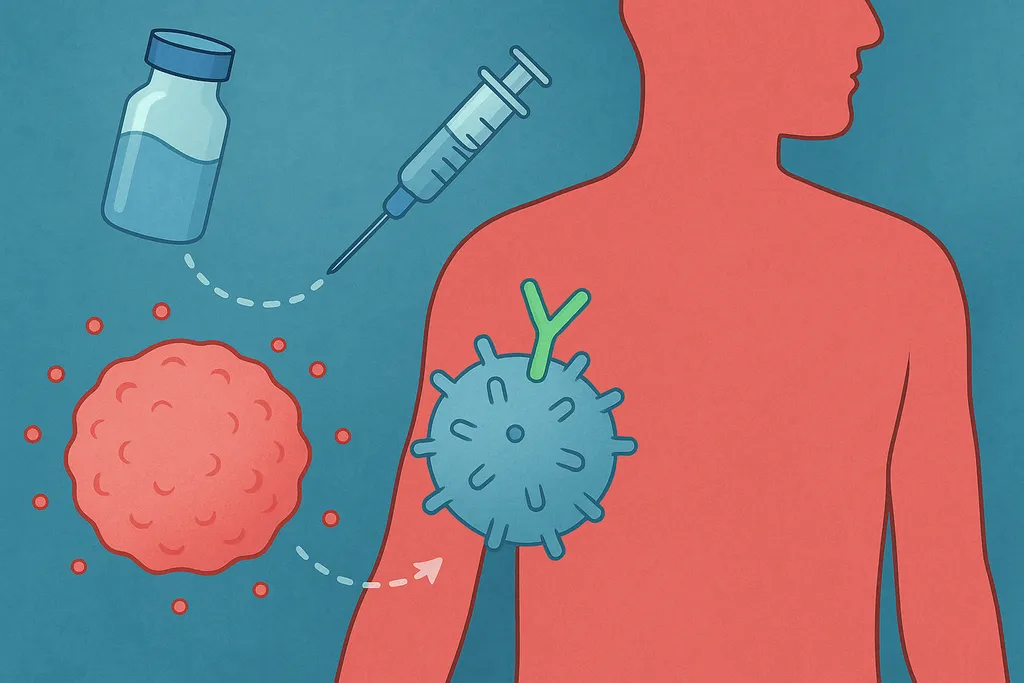Relapsed DLBCL Treatment Options: Exploring Loncastuximab Tesirine (Zynlonta)

Diffuse Large B-cell lymphoma (DLBCL) is an aggressive form of non-Hodgkin lymphoma. While initial treatment with chemotherapy is often successful, a significant challenge arises when the cancer returns, known as relapsed/refractory DLBCL. When faced with such situations, available treatment choices become restricted, and the future prospects may seem discouraging.
The Rise of Targeted Therapies
The development of targeted therapies has revolutionized cancer treatment, offering new hope for patients with DLBCL. Loncastuximab Tesirine (Zynlonta) is a relatively new option approved by the FDA in 2021 that falls under this category.
How Does Loncastuximab Tesirine Work?
Zynlonta is an antibody-drug conjugate (ADC). This means it's a targeted therapy that delivers a chemotherapy drug directly to cancer cells. Zynlonta targets a specific protein called CD19, found on the surface of many DLBCL cells. It is administered by IV infusion, lasting 30 minutes, every 3 weeks for up to a year.
The results of a recent Phase II clinical trial (LOTIS-2) are encouraging. The trial involved 145 patients with relapsed/refractory DLBCL who had received at least two prior lines of therapy. The study showed an overall response rate of 48.3%. But of the 24.8% of patients who achieved complete remission, 68.2% were still in remission after. 2 years of treatment. These results suggest that Zynlonta can be effective in patients who haven't responded well to other treatments and who may have limited choices.
Important Safety Information
Zynlonta may not be suitable for everyone. Some of the most common side effects experienced with Zynlonta include:
- Low blood cell counts (including thrombocytopenia, neutropenia, and lymphopenia)
- Fatigue
- Peripheral neuropathy (tingling or numbness in hands and feet)
- Nausea
- Diarrhea
- Tumor lysis syndrome (a metabolic complication that can occur when cancer cells are rapidly broken down)
- Effusion and Edema: Too much fluid buildup, which can cause swelling.
Zynlonta (Loncastuximab Tesirine) represents a significant advancement in the fight against relapsed/refractory DLBCL. While Zynlonta offers a promising new treatment option, it's important to stay informed about all available treatment paths. The field of DLBCL treatment is constantly evolving, with ongoing research into new and improved therapies. Stay updated with HealthTree for DLBCL:
Sources:
Diffuse Large B-cell lymphoma (DLBCL) is an aggressive form of non-Hodgkin lymphoma. While initial treatment with chemotherapy is often successful, a significant challenge arises when the cancer returns, known as relapsed/refractory DLBCL. When faced with such situations, available treatment choices become restricted, and the future prospects may seem discouraging.
The Rise of Targeted Therapies
The development of targeted therapies has revolutionized cancer treatment, offering new hope for patients with DLBCL. Loncastuximab Tesirine (Zynlonta) is a relatively new option approved by the FDA in 2021 that falls under this category.
How Does Loncastuximab Tesirine Work?
Zynlonta is an antibody-drug conjugate (ADC). This means it's a targeted therapy that delivers a chemotherapy drug directly to cancer cells. Zynlonta targets a specific protein called CD19, found on the surface of many DLBCL cells. It is administered by IV infusion, lasting 30 minutes, every 3 weeks for up to a year.
The results of a recent Phase II clinical trial (LOTIS-2) are encouraging. The trial involved 145 patients with relapsed/refractory DLBCL who had received at least two prior lines of therapy. The study showed an overall response rate of 48.3%. But of the 24.8% of patients who achieved complete remission, 68.2% were still in remission after. 2 years of treatment. These results suggest that Zynlonta can be effective in patients who haven't responded well to other treatments and who may have limited choices.
Important Safety Information
Zynlonta may not be suitable for everyone. Some of the most common side effects experienced with Zynlonta include:
- Low blood cell counts (including thrombocytopenia, neutropenia, and lymphopenia)
- Fatigue
- Peripheral neuropathy (tingling or numbness in hands and feet)
- Nausea
- Diarrhea
- Tumor lysis syndrome (a metabolic complication that can occur when cancer cells are rapidly broken down)
- Effusion and Edema: Too much fluid buildup, which can cause swelling.
Zynlonta (Loncastuximab Tesirine) represents a significant advancement in the fight against relapsed/refractory DLBCL. While Zynlonta offers a promising new treatment option, it's important to stay informed about all available treatment paths. The field of DLBCL treatment is constantly evolving, with ongoing research into new and improved therapies. Stay updated with HealthTree for DLBCL:
Sources:

about the author
Lisa Foster
Lisa Foster is a mom of 3 daughters and 1 perfect grandchild, a puzzle lover, writer and HealthTree advocate. She believes in the mission of the foundation and the team that builds it forward. She calls Houston, Texas home.
More on Treatment Advances
Trending Articles
Get the Latest Large B Cell Lymphoma Updates, Delivered to You.
By subscribing to the HealthTree newsletter, you'll receive the latest research, treatment updates, and expert insights to help you navigate your health.
Together we care.
Together we cure.
3x Faster.










